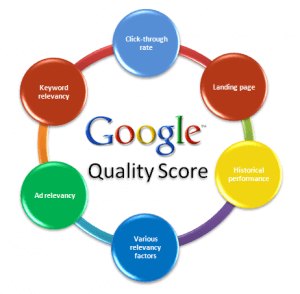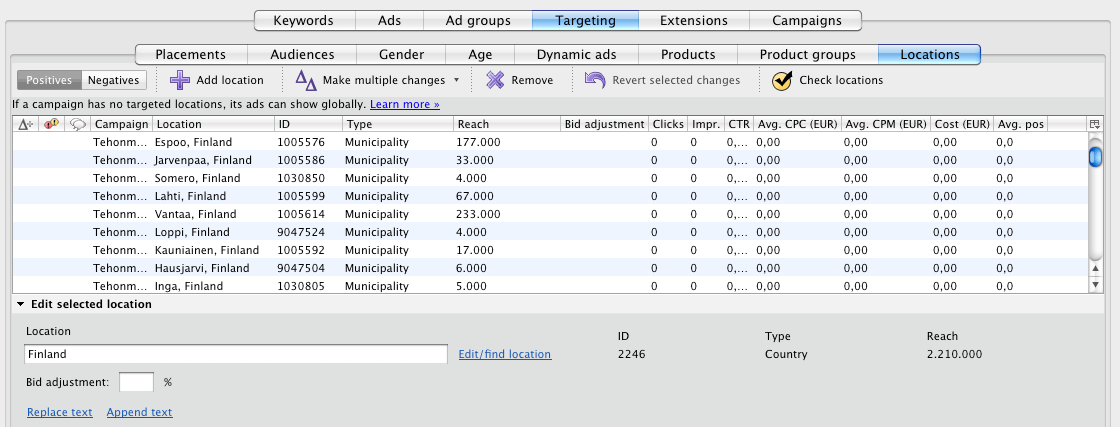Google AdWords Advertising in a nutshell
While most e-commerce operators are undoubtedly familiar with Google AdWords advertising, do you know what you’re actually paying for? Whether you’ve already been running an AdWords campaign or you’re just getting started, this article will give you a few noteworthy pointers.
In addition to other services, we also often provide our clients with Google AdWords account setup, auditing and maintenance. But that’s easy, right? Just add in a few keywords, conjure up a few catchy ads and wait for the money to flow in.
Unfortunately this is nowhere near guaranteed. Google may get your ad money while none of your webpage visitors actually buy anything. If you thought a high click through rate translates automatically into sales, you might want to keep on reading.

How can I turn Google AdWords advertising into sales?
Plan your account structure and ad groups properly
Google AdWords advertising and campaign management becomes instantly much easier when you plan your account structure properly from the beginning. If your account has only on campaign with hundreds of keywords and tens of ads in the same group, you obviously won’t get the most out of it. Modification is also considerably less painstaking afterwards if you’ve followed a clear and consistent logic from the start.
For one thing, you should arrange your ad groupsaccording to category. Let’s say your webstore specializes in clothing, for instance. If your selection is large, you should even go to the extent of organizing different types of underwear into their own subgroups.This will allow you to precisely allocate ad group-specific keywords to make your ads more relevant and direct your website visitors to exactly the right pages.
Choosing the right keyword type
Careful ad group categorization and organization will greatly simplify keyword selection. This, however, also hinges on understanding the specific purpose of different keyword types and matching options (broad, phrase or exact). Broad match keywords allow your ads to be seen by potential customers who mistype your product’s name or search by synonym, for example. Exact match keywords on the other hand are more suitable for the job when you want your ad shown exclusively to those customer searching for your exact keyword.
Example. Table for the keyword “women’s handbags”:
| Keyword matching option | Specific symbol | Keyword example | Ads will be displayed if the searched | Search examples |
|---|---|---|---|---|
| Broad match | none | women’s handbags | include mistyped terms, synonyms, close equivalents or variants | buy ladies handbags |
| Broad match modifier | +keyword | +women’s +handbags | include the modified term (or close variants, but not synonyms) in any order | handbags for women |
| Phrase match | “keyword” | “women’s handbags” | are the phrase or a close variant of it | buy women’s handbags |
| Exact match | [keyword] | [womens bags] | are the exact termor close variants | women’s handbags |
| Negative match | -keyword | -women | are searches without the term | cheap handbags |
Remember negative keywords
I often ask my clients about their use of negative keywords. This usually evokes a great deal of confusion. While often overlooked, negative keywordsare a far-from-trivial aspect of online advertising – especially if you aim to maximize direct sales instead of just promoting your brand. Through the use of negative keywords, you can eliminate useless or unwanted traffic. You can block your ads from being displayed to people searching for discussions, tutorials or Youtube videos, for example. Why? If you’re in real estate, you probably won’t want constant inquiries from people looking for hands-on construction advice.
Examples:
- free
- cheap
- torrent
- Youtube
- tutorial
- advice
- how-to
- hiring
And so on and so on. The use of correct negative keywords can significantly improve the profitability of your Google AdWords advertising through the elimination of unwanted (i.e. non-buying) website traffic.
Creating advertisements and Ad Rank
Spending some time on Google AdWords advertisements is advisable as they give you a chance to differentiate and noticeably distinguish yourself from rivals who use the same keywords, and rank higher even in paid search results. That’s right. Ad Rank(how well your ad ranks in searches) is determined not only according to the maximum cost-per-click(CPC) you’ve set, but also theQuality Scoreof your ads and webpages. So: even with a lower maximum cost-per-click you can rank higher than your rivals, if your ads and webpages are up to snuff!

What determines ad quality?
First of all, choosing a strategy in line with your business goals. You probably won’t want to maximize your click rate with a tight budget. Especially this accentuates the importance of well thought-out ad group categorization. With a precise subdivision of ad groups (for instance “handbags” and “backpacks”), you can highlight just the products your customer is searching for. If a search for “handbags” produces an ad about “backpacks”, it’s no longer accurate.
Example ads for “women’s handbags” (and close variants) keyword:


A few general guidelines to keep in mind when creating ads:
- Make sure ads and destination webpages match in terms of content
- Emphasize fast delivery and lowered prices
- Ensure that keywords are attached to your ads
- Call your customer to action!
You should create several ads to each group, as Google AdWords advertising is a process of constant experimentation and evaluation even for veterans of the game. Several ads will allow you to track and compare performance to see which ads generate the most interest, helping you make the appropriate adjustments to replicate your successes. Ads for mobile devices should be created separately altogether. With mobile ads, being pithy and to-the-point is key, as well as emphasizing the possibility of mobile purchasing if it’s something you offer.
Google AdWords — increased effectiveness through targeted advertising
Do you know who your clients are? Google AdWords enables extremely precise targeting, allowing you to more efficiently reach just your target audience. You can target ads according to age, gender or even geographic location. On the one hand, if you aim to maximize direct sales, narrowing down your target audience is the best bet. If, on the other hand, you want to promote brand awareness and recognition, you may want to generate discussion even outside your target audience. Location targeting can be extremely powerful as well, especially if your product or service cannot be purchased online and your customer has to come to you physically.

Experiment and evaluate
Effective Google AdWords advertising requires a lot of testing and analysis. Synchronizing your AdWords account with Google Analytics, a tool used to track sales through ads for example, will lighten your workload considerably.
Constant evaluation of advertising effectiveness is highly recommended. Does a certain keyword have a higher-than optimal click-through rate? Or do some advertisements outperform others by a wide margin? Finding out why and making the appropriate adjustments can save you a significant amount of effort and money without any real loss in clientele.
SEOSEON.com provides businesses with Google AdWords advertising and analysis of already ongoing campaigns. If you’re uncertain about the effectiveness of your Google AdWords advertising or need help implementing your campaign in other languages, don’t hesitate to contact Samuli directly! – samuli.makela(at)seoseon.com
If you found this article useful, be sure to help out your friends too and share it on social media. Thanks!

